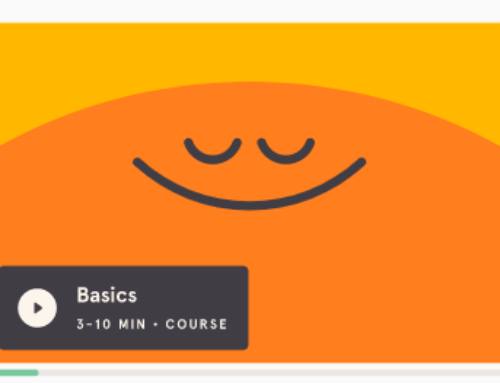
It doesn’t matter if you’re a young teenager or at your middle age as pain does not discriminate age and gender. Pain disrupted my meditation practice when I was 17. Now, in my mid-30s and with a slight spinal issue, pain held me in a death grip barely minutes of I started my session.
Recommended: 22 Simple Mindfulness Meditation Tips To Simplify Your Practice In 2018
Most of the mindfulness guides mentioned about focusing on the breathing and dealing with wandering thoughts. Little was mentioned about dealing with pain. I’m sharing what I learned from my meditation teacher in regards to managing pain during meditation sessions.
So, How To Ease Your Pain With Mindfulness?
First of all, it’s important to set the expectation right on dealing with pain with mindfulness. It’s not about magically removing the causes of your pain but rather changing the way your mind responds to it. A shift in your thought pattern will make the pain more bearable or rather less noticeable.
1. Getting Your Posture Right
You should always start your meditation with the right posture. It doesn’t matter if you’re doing Half-lotus or Burmese style. What’s important is to have your spine firm and upright but not too stiff. A right posture means you wouldn’t be struggling with a backache as soon as you start meditating. It allows you time to build up your self-awareness and focus to deal with any painful sensations later.
I found that the right meditation cushion matters but what’s more important is your position on the meditation cushion. I often sit with my feet resting lower than my tight by elevating my meditation cushion. It prevents my feet from getting numb and reduces my back pain.
2. Turn The Pain Into A Mindfulness Object
Our survival instinct naturally made us aversive to pain. When your back start aching, you’ll naturally have thoughts like “should I change my posture?” or “I can’t concentrate on my breathing“. Frustration may build up and instead of mindfulness, you spend the rest of the session rejecting the sensations.
The right way of dealing with pain is to shift your attention to pain itself. Just as you watch your breathing, be aware of the specific sensations caused by the pain. Does it feel like needles poking your back? Do you feel tightness? Is the pain felt in a tiny area?
Do not attempt to dissect the cause of your pain. Just be aware of it as it is. You’ll be surprised that when you are mindful of your pain, the actual sensations may not be as bad as you perceived. Our thoughts reaction usually causes pain to feel more severe than it really is.
3. Ground Your Focus On Your Breathing
Of course, there are occasions where the pain became unbearable and it’s almost impossible to focus on it. This is where you should ground your focus back to your breathing. You can use labels like “inhale” or “exhale” to strengthen your focus.
This does not mean you are trying to escape from your painful sensations, but merely taking a breather before shifting back your mindfulness to the pain again. Alternating your mindfulness between breathing and pain can make the session more bearable.
I’ve been using this method to meditate in spite of my problematic spine.
4. Divert Your Attention With Body Scan Mindfulness
This is a similar method to shifting your mindfulness to breathing, except you are alternating with more objects at a faster rate. If you’re at the point of giving up, try shifting your awareness to multiple parts of your body; neck, shoulder, thigh, and feet.
As you actively shift your focus, your mind will have lesser chance to react to the pain. Occasionally, bring your attention back to the pain itself and try to pinpoint the various agonizing sensation without reacting to it. Read more about body scan mindfulness here.
Remember, mindfulness meditation is not always about watching your breathing. It’s about training your mind to be impartial in adverse situations.
5. Walk Away
Pain is part and parcel of meditation but meditation is not about continuously torturing your body. When you’ve gone through 30 minutes of chronic pain, you knew you have reached your limit. There is no shame in calling it a day with your meditation session.
You can end your practice mindfully by noting the intention to shift from your posture and bring yourself to a standing position. Be aware of the changes or decrease in the painful sensations. At the end of the day, mindfulness is not confined to sitting still with your leg crossed.
When you’re used to watching pain mindfully, you’ll find that pain is an interesting object and a great teacher itself. Anyway, I hope this article has helped you to ease your pain in your mindfulness practice. Do share it around if you think it will help others too.
Did you struggle with pain when meditating? How do you deal with pain mindfully? Share your thoughts in the comment below.
Related:







Leave A Comment